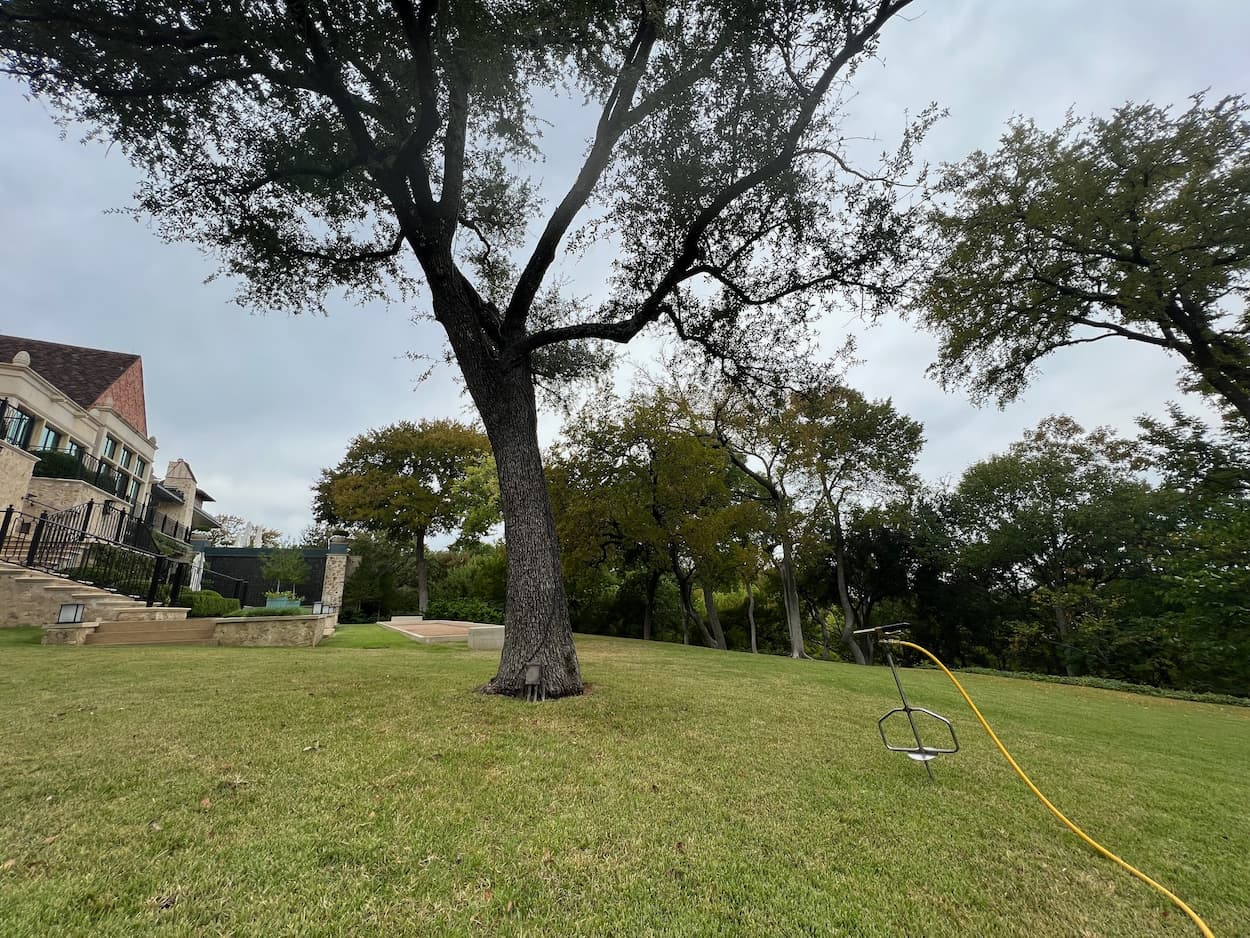Texas Shrubs & Tree Health Care Experts
Caring For Texas Shrubs & Trees Since 1990 Get A Free QuoteCall (817) 880-6130Tree & Shrub Pest Treatment Services in Edgecliff Village, TX
Our ISA Certified Arborist Can Help Treat Your Trees and Shrubs From Pests in Edgecliff Village, TX.
Arborist USA provides Tree & Shrub Pest Treatment Services in Edgecliff Village, Texas, and the surrounding areas.
Edgecliff Village, located in Texas, is celebrated for its rich array of tree species and elegant shrubs. Yet, these attractive green assets are incessantly threatened by diverse pests. The implementation of proactive and efficient tree and shrub pest treatments is paramount to preserving Edgecliff Village’s natural aesthetics.
In conclusion, the vitality and wellness of Edgecliff Village’s vibrant green landscapes require efficient management of tree and shrub pests. Through the quick and effective deployment of pest treatments, the city can continue to cherish and promote its green spaces, fortifying its profile as a locale that thrives in natural beauty. This commitment to a healthy environment ensures that Edgecliff Village continues to bloom for the enjoyment of future generations.
If you are in need of Tree & Shrub Pest Treatment Services in Edgecliff Village, TX, please get in touch with Arborist USA today by calling us at (817) 880-6130, your Tree & Shrub Disease Specialist.
Signs of a Sick Tree or Sick Shrub
- Dead Branches
- Yellowing Leaves
- Fungi or Decay
- Bark Falling Off
- Discolored or Rusted Leaves
- Dying Tree or Shrub
- Leaf Discoloration
- Root or Insect Damage
- Leaves look like they’re being eaten
- Bark is Peeling
- Holes in leaves
- Holes on Bark or Branches
- Stunted Growth
- Canopy Dieback
- Bark Abnormalities
- Wilting
Tree & Shrub Helpful Tips
1. Pest Types:
Trees and shrubs in Edgecliff Village often fall victim to pests such as aphids, caterpillars, beetles, borers, mites, and scale insects. Quick detection and responsive treatments can mitigate the havoc that these pests can wreak.
2. Identifying Infestations:
Signs such as unusual leaf coloration or wilting, premature leaf drop, peculiarities in the bark like boreholes, restricted plant growth, and canopy dieback often indicate a pest infestation. Recognizing these signs early on allows timely intervention and effective pest control.
3. Immediate Treatment Is Crucial:
Unattended pest infestations can drastically compromise the health of trees and shrubs, leading to eventual death. Early treatment helps to restrict severe damage and avoid the subsequent costs associated with tree removal and replacement.
4. Value of Professional Services:
Professional pest treatment services come with the expertise needed to correctly identify pest species and formulate suitable treatment strategies. They offer ongoing monitoring and make appropriate adjustments for best results.
5. Treatment Methods:
The treatment strategy depends on the nature of the pest and the intensity of the infestation. Professionals may employ biological control methods that use natural enemies of the pests, chemical control involving pesticide application, cultural control using proper tree and shrub care practices, and mechanical control, which is the direct removal of pests.
6. Preventive Measures:
Prevention is pivotal in pest control. Regular pruning, suitable watering, and fertilizing practices, and maintaining plant diversity disrupt pest dominance, reducing potential infestations.
7. Integrated Pest Management (IPM):
This is an all-inclusive strategy that combines various pest control methods for maximized effectiveness with minimal environmental impact. It’s considered the most sustainable approach to pest control.
8. Balance Between Pest Control and Biodiversity:
While combating pests is significant, care should also be taken not to harms beneficial insects and local wildlife. This delicate balance is best maintained by professional services.
9. Role of the Community:
The commitment of residents is key in noticing early signs of infestations, applying preventive care, and promptly seeking professional help.
10. Education and Awareness:
Widespread knowledge about common pests, early detection signs, and control methods is vital to foster community-wide participation in pest management.
If you’re concerned or have any further questions about our Tree & Shrub Pest Treatment Services in Edgecliff Village, TX, or surrounding areas in North Texas, please call us at (817) 880-6130.
Tree & Shrub Pests
Listed below are common Tree & Shrub Pests found in Texas.
Aphids
A white soft body insect that creates a sticky "honey dew" structure on limbs or leaves, blocking nutrients.
Bagworms
Bagworms lay eggs that create small cone-shaped structures less than three inches in length.
Beetles
An invasive wood borer that is subject in all wood tissue that causes severe decline in trees health.
Gypsy Moth
A larva that boars into leaf structure that cause lesser of a foliation and decline in overall leaf structure.
Oak Gall
A growth deformity known as a "gall" commonly occur on oak trees subject to branches and other structures.
Termites
Termites, wood-destroying insect, eats away at all wood tissue, damaging the structures of the trees.
Twig Girdlers
Being a member of the long-horned beetle family, these girdlers are known to eat leaf and other tree areas.
Webworms
These caterpillars spin white webbing bag nests in tree branches and eat your tree foliage (leaves).
Certifications




Our Reviews

A+ BBB Rating based on 31 BBB Reviews
4.8/5.0 based on 83 Top Rated Local Reviews
4.6/5.0 based on 36 Facebook Reviews
4.0/5.0 based on 4 Trust Pilot Reviews

4.9/5.0 based on 90 Google Reviews
4.5/5.0 based on 13 Yelp Reviews
29 Recommendations on Nextdoor
Total Reviews: 286 ![]() Real Customer Reviews
Real Customer Reviews







